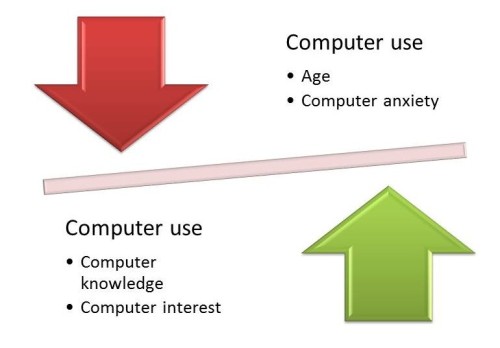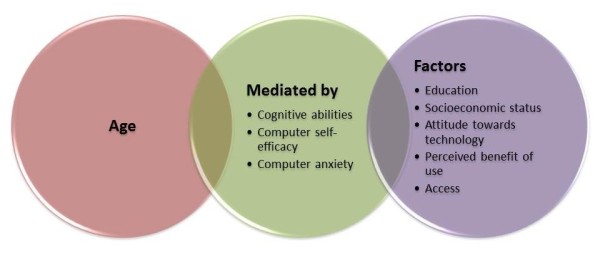Technology, Computer, and the Internet
Computer, particularly internet, is the most prominent feature of contemporary technology. In fact, the technology has become an integral part of everyday life because computers handle vast amounts of information and computations that shape today’s living. The use of computer has infiltrated areas such as banking, shopping, entertainment, and education, to name a few. Additionally, most operations are performed online through the internet or intranet networks. For instance, if a garment is not available in one store, the store staff will check on the network and advise the customer which store holds an inventory.
Industries shift from labor-intensive manufacturing to mass production through major investments of machineries and technologies (Merriam, Courtenay, & Cervero, 2006). This transition creates a bloom of advertising and media industries to encourage consumerism in order to compensate for the diminished profit (Merriam et al., 2006). Cross (1992) commented technological changes “… have created and wiped out entire industries and occupations… and they have forced individuals to cope with change both as producers and as consumers” (p. 29). Together, technological advances and globalization form a chain reaction that enhances and reinforces consumerism. At the same time, people are forced to learn and use new technologies. The only choice is to be either an early adopter or a laggard, or in between.
On the work front, globalization and the advances of technology demand workers to use computer routinely in almost all industries. Merriam, Caffarella, and Baumgartner summarized the phenomenon: “Automation and robotics displace production workers but create other jobs. Technology creates alternative work structures. The need to be competitive in the world market leads to further technological sophistication” (2007, p. 21). Automation takes over many low-skilled tasks. Presently most jobs require workers to operate, monitor, and control certain computer functions, and many such operations are executed online.
Either personal life or work demands adoption of technologies. For instance, even a microwave oven incorporates some computer technologies. A person has to learn to control a multitude of household gadgets in order to be functional and independent. Studies found that seniors did not adopt technologies as well as young people (Broady, Chan, & Caputi, 2010; Czaja et al., 2006).
Age and Computer / Internet Use
In adults, age is negatively related to the use of computer and internet (comScore, 2011; Czaja et al., 2006; Middleton, Veenhof, & Veenhof, 2010; Wagner, Hassanein, & Head, 2010). In 2010, Canadians are the most copious internet users in the world (comScore, 2011). Again, older Canadians are less intense internet users, and they use the internet for fewer types of activities compared to younger Canadians (Middleton et al., 2010). However, research results about older computer users are not consistent or even contradicting (Broady et al., 2010; Wagner et al., 2010). Still, several themes emerged, and these themes were quite consistent across the literature.
Important predictive factors for computer / internet use are cognitive abilities, computer self-efficacy, and computer anxiety (Czaja et al., 2006; Wagner et al., 2010). As a result of normal aging, fluid intelligence, attention span, and memory decline with diminishing vision, hearing, and psychomotor coordination functions (Craik & Bialystok, 2006; Czaja et al., 2006; Wagner et al., 2010). Older computer users frequently demonstrate lower accuracy and slower speed, and generally perform poorer than younger adults (Wagner et al., 2010). However, these challenges can be overcome by practice. Wagner (2010) found, in a meta-analysis, that experience could enhance speed and performance.
People with higher computer self-efficacy are more likely to use computers (Broady et al., 2010; Czaja et al., 2006; Wagner et al., 2010). In general, old people’s negative attitude towards computer stems from lack of experience (Broady et al., 2010; Wagner et al., 2010). Having a sense of achievement and being in a supportive environment improve users’ confidence, which is particularly effective in motivating older computer users (Czaja et al., 2006).
Finally, computer anxiety is another deterrent to computer use (Broady et al., 2010; Czaja et al., 2006; Wagner et al., 2010). Again, increased computer knowledge and experience can lower the anxiety level and encourage computer usage (Broady et al., 2010; Czaja et al., 2006; Wagner et al., 2010). In sum, an inclusive and relaxed environment encourages older adults to use the computer. To foster learning and usage, adequate time should be allowed. Using some accessibility functions such as larger fonts or captions reduces stress to older users.
Other Factors
Older adults are pragmatic and selective. They need to recognize the benefits of using a computer before incentive emerges (Wagner et al., 2010). Other factors favoring computer use include education, socioeconomic status, and having access to the computer (Broady et al., 2010; Czaja et al., 2006; Wagner et al., 2010).
Baby Boomers and the Computer / Internet
Silver surfers (older adults, including baby boomers) are the fastest growing group in internet users (comScore, 2011; Czaja et al., 2006; Middleton et al., 2010; Wagner et al., 2010). Boomers are unique because this group witnessed the change from no easy access to using the computer or internet as a daily routine (Technology and the baby boomers.2010). Besides pragmatic, boomers demand technology to tailor to their needs (Rogers, 2009). Also, boomers like to share their experiences, and they feel the peer pressure to use technologies (Rogers, 2009). Because they cannot tolerate to feel inferior to the next generation, boomers are compelled to update their computer knowledge (Rogers, 2009).
One disincentive for seniors to adopt technologies is the anticipation of problems or equipment break down. Moreover, boomers demand equipment to be easy to use and equip with self-repairing capabilities (Rogers, 2009). Baby boomers continue to shape the world, including use of technologies, by exerting forces provided by their sheer number.
Finally, increasingly more seniors engage in social networking such as Facebook (comScore, 2011). Older adults find social networking a useful means to connect to family and friends, especially grandchildren (comScore, 2011; Rogers, 2009; Wagner et al., 2010). Seniors with limited mobility benefit most because they can evade isolation. For the same reason, seniors also like to use videoconferencing (comScore, 2011). Video enhances human contact by enabling non-verbal communications such as gestures and facial expressions. It also provides valuable visual cues for seniors who are hard of hearing.
Summary
Seniors are using computer and internet for everyday life and communications. They will soon discover how the technologies improve their lives, including socialization, healthcare, banking, and many more.
References
Broady, T., Chan, A., & Caputi, P. (2010). Comparison of older and younger adults’ attitudes towards and abilities with computers: Implications for training and learning. British Journal of Educational Technology, 41(3), 473-485.
comScore. (2011). The 2010 Canada digital year in review. Retrieved January 31, 2013, from http://www.comscore.com/Insights/Presentations_and_Whitepapers/2011/2010_Canada_Digital_Year_in_Review
Craik, F. I. M., & Bialystok, E. (2006). Cognition through the lifespan: Mechanisms of change. Trends in Cognitive Sciences, 10(3), 131-138. doi: 10.1016/j.tics.2006.01.007
Cross, K. P. (1992). Adults as learners: Increasing participation and facilitating learning (Jossey Bass higher and adult education series). San Francisco: Jossey-Bass.
Czaja, S. J., Fisk, A. D., Hertzog, C., Rogers, W. A., Charness, N., Nair, S. N., & Sharit, J. (2006). Factors predicting the use of technology: Findings from The Center for Research and Education on Aging and Technology Enhancement (CREATE). Psychology & Aging, 21(2), 333-353.
Merriam, S. B., Courtenay, B. C., & Cervero, R. M. (Eds.). (2006). Global issues and adult education: Perspectives from Latin America, Southern Africa and the United States. San Francisco: Jossey-Bass.
Merriam, S. B., Caffarella, R. S., & Baumgartner, L. (2007). Learning in adulthood: A comprehensive guide (3rd ed.). San Francisco: Jossey-Bass.
Middleton, C., Veenhof, B. & Veenhof, J. (2010). Intensity of internet use in Canada: Understanding different types of users. Retrieved from http://www.statcan.gc.ca/pub/88f0006x/88f0006x2010002-eng.pdf
Rogers, M. (2009). Boomers and technology: An extended conversation. Retrieved from http://assets.aarp.org/www.aarp.org_/articles/computers/2009_boomers_and_technology_final_report.pdf
Technology and the baby boomers. (2010). World Future Review, 2(3), 54-59.
Wagner, N., Hassanein, K., & Head, M. (2010). Computer use by older adults: A multi-disciplinary review. Computers in Human Behavior; Advancing Educational Research on Computer-Supported Collaborative Learning (CSCL) through the use of gStudy CSCL Tools, 26(5), 870-882. doi: http://dx.doi.org/10.1016/j.chb.2010.03.029



Pingback: Canadian Female Baby Boomers and the Computer | Education Issues for Female Baby Boomers